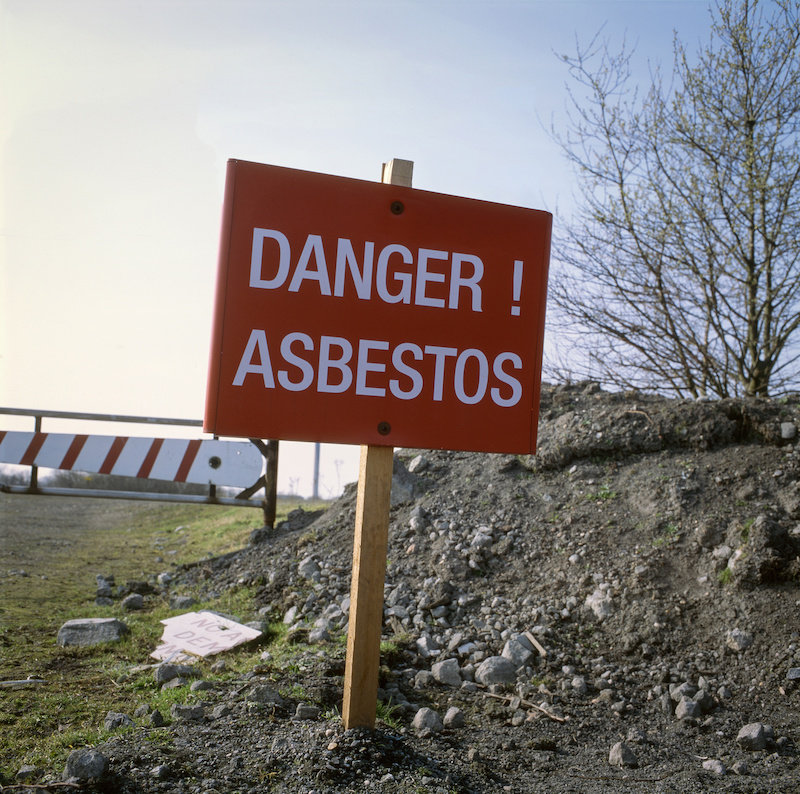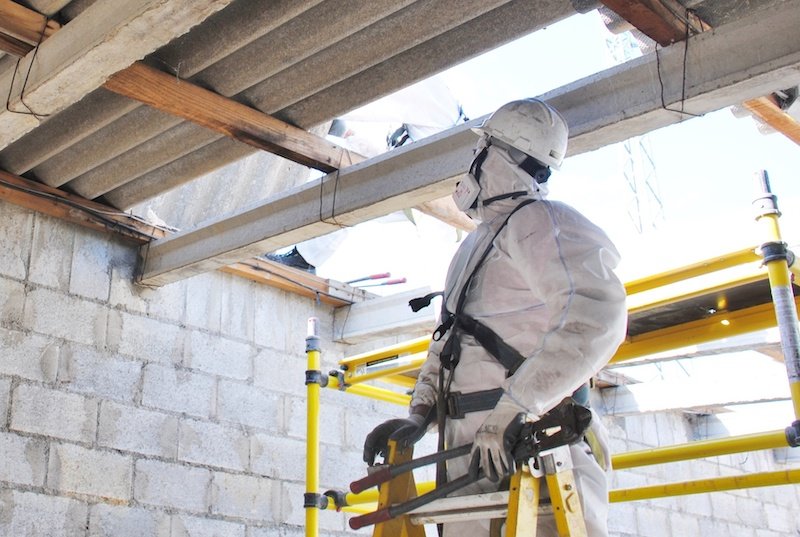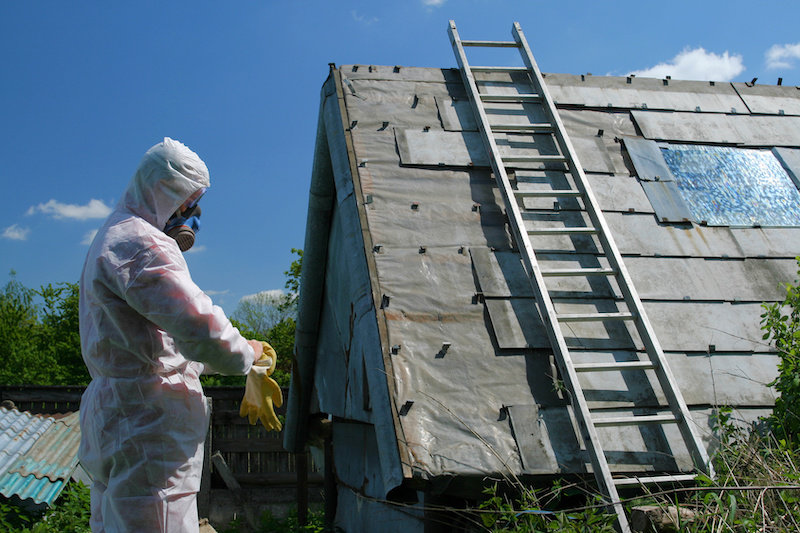Asbestos Safety: Risk, Inspection, Assessment, and Abatement Considerations
Asbestos Safety: Risk, Inspection, Assessment, and Abatement Considerations
Asbestos is a naturally occurring mineral that can cause cancer in humans and animals. For decades, the side-effects of asbestos exposure was unknown to people, and asbestos was used regularly in home construction. Although use of asbestos in the home has dramatically decreased over the years, it is still found in a variety of household materials, especially in older homes.
Whether you own your own home or are a renter, you should be aware of asbestos, where it can be found in your home, and what you can do to protect yourself and other members of your household. Provided that asbestos-containing materials are kept in good condition, you may be able to live in the presence of asbestos for decades without any ill effects. Knowing when asbestos is a danger, how to remove asbestos and when to leave it alone can help you stay safe.
Table of Contents
Where Asbestos is Commonly Found

Decades ago, asbestos was used in building materials found all over the common household. Although some of these materials have been removed from homes over time, some are still in use today. Here’s where you may be able to find asbestos in your home:
- HVAC system. Duct connectors, HVAC fabric, duct insulation, furnace cement, duct tape and even some kinds of ducts themselves can all contain asbestos.
- Electrical system. Asbestos is used for wiring insulation, cable wrap and electrical shielding.
- Home exterior. Asbestos can be found in felt paper, shingles, siding, roof sealant, and cement.
- Insulation. Asbestos was used in the past for insulation, and can still be found in some insulation products today.
- Flooring. Floor products, including floor tiles and sheet flooring, were traditionally made with asbestos.
Asbestos was used most frequently in products before 1980, but today, the EPA still allows asbestos to be used in some household items and building materials. Consumers can find asbestos in everything from fire safety products to plaster and interior flooring.
Why Asbestos?
Asbestos does not burn and only melts at 1600 degrees Fahrenheit. In fact, the word asbestos comes from the Greek word for inextinguishable. It’s so fire-resistant that it’s been said Emperor Charlemagne had an asbestos tablecloth that he would throw onto the fire to amaze people at his dinner parties when the cloth did not burn.
If asbestos were not so toxic to humans, the applications of this mineral would be incredible. Homes could be made from non-burning materials and house fires would greatly diminish. As a result, asbestos was used in homes extensively until the 1970s.
Some household products contain asbestos inadvertently. Because asbestos occurs in nature, it can sometimes be found in products containing talc, a mineral that is found with asbestos. Sometimes, asbestos can be found in cosmetic products containing talcum powder. This occasionally leads to consumer-product recalls.
Reasons to Check for Asbestos
Although asbestos can be found in many household products, it is often not a threat in modern homes. Asbestos is only toxic to humans when airborne. Encased in other materials, asbestos cannot be breathed in and thus cannot pose a danger to humans. Asbestos is a hazard when it is friable, meaning that the asbestos has begun to deteriorate and the shredding fibers are becoming airborne.
Homeowners and consumers should know where the asbestos in their house is located, because if the asbestos is damaged, it can become friable. Asbestos is at the greatest risk for becoming damaged during home remodels, when it is being moved or when it is being cut down to a smaller size. Any homeowner with a structure built before 1980 who is planning to remodel or repair their home after a natural disaster should know which products in their home contain asbestos. If someone is looking to purchase Chadwick Beach real estate built before 1978, they’ll typically have to receive disclosure from the seller.
Identifying the products in the house that contain asbestos can be difficult or impossible for a person without formal training. Therefore, the best way to identify which parts of the house contain asbestos is to hire an inspector. Many states license asbestos inspectors, so the best way to choose a professional in your state is to check for licensure requirements and hire someone with the proper credentials.
A licensed inspector will come to the house and look in the standard locations where asbestos could be found. Most inspectors will produce a written report that the homeowner can use either for asbestos remediation or upcoming remodels.
Different Types of Asbestos
It’s surprising for many people to find out that there are different types of asbestos, mined in different parts of the world. All types of asbestos are fibrous, but each type has different properties and can have different applications.
White Asbestos
Also known as chrysotile, white asbestos is known for having a fine texture and being very flexible. It’s used in roofing materials, flooring, ceilings, walls and brake pads. White asbestos has residential and commercial applications, and can be found in businesses and homes.
Blue Asbestos
Also called crocidolite, blue asbestos is a rare mineral that is not often used. Its very thin and brittle fibers make this form of asbestos especially dangerous. Found in plastic and cement products, it’s also been used to insulate steam engines and pipes in the past.
Brown Asbestos
Brown asbestos, also called amosite, is especially strong and heat-resistant. Brown asbestos is found in ceiling tiles, pipe insulation and insulating boards. Brown asbestos is believed to be especially cancerous.
What to Do If You Have Asbestos In Your Home

Some estimates say that about 50% of homes contain asbestos, and about 5,000 products have contained or still contain asbestos. No matter where you live, there’s a good chance that your home contains asbestos.
Does that mean it should be removed?
Non-friable asbestos is sometimes more dangerous when disturbed than when left in place. The condition of the material, its location, what it’s used for, and other factors can all affect whether or not the asbestos should be removed or left in place.
Is It Safer to Remove Asbestos From a Building or Leave It There?
When trying to decide whether to remove asbestos from your building, there are many factors to take into consideration. The first and often the most important is the condition of the asbestos. If the material has been cut into, broken, bent, scraped or in any other way damaged, the asbestos may be friable.
What is Friable Asbestos?
Asbestos fibers are toxic for humans, and can cause cancer when inhaled. However, asbestos is usually encased in other materials. It is an ingredient in insulation, flooring and wiring, plastic or vinyl. It’s only when those harder materials are damaged and the asbestos fibers become airborne that asbestos becomes a danger. It is this condition, when asbestos fibers are released into the air, that is referred to as friable.
Location is another factor that could affect whether asbestos should be removed. Asbestos that is out in the open where it can easily be damaged is likely a much-greater danger than asbestos that is located in a part of the home where people rarely go, like in the walls or an unfinished attic.
Sometimes, leaving asbestos in place isn’t an option. Remodels, repairs and other changes in the home can have an effect on whether asbestos should be removed. The removal process is complex and must be done by a trained professional. A homeowner who tries to remove their own asbestos may expose themselves and members of their household to asbestos fibers.
Asbestos Do’s and Don’ts
Do’s:
- Do hire a professional to remediate asbestos.
- Do check the professional’s licensure, certification, or other requirements (depending on the state where you live).
- Do keep children and adults out of the area where asbestos is believed to be located.
- Do test materials that might contain asbestos before performing repairs or removal.
- Do dispose of materials containing asbestos in a manner in compliance with local and federal laws.
- Do check references for any asbestos removal professional you’re thinking about hiring.
Don’ts:
- Don’t attempt to remove asbestos on your own without proper training or certification.
- Don’t run the HVAC system if friable asbestos has been located in a ventilated room of the house.
- Don’t saw, cut, sand, drill, damage or break any material believed to contain asbestos.
- Don’t vacuum or dust in a room with a material believed contain asbestos.
- Don’t bring asbestos-contaminated clothing into your home.
Asbestos Abatement Costs

Asbestos abatement can be costly, depending on factors like what needs to be removed, how much there is, what condition it’s in and where it’s located.
Initial Home Inspection
Cost: $400 to $800
Abatement starts with an initial home inspection to locate the asbestos and assess its condition. Abatement surveys are conducted by certified professionals, though qualifications vary by state.
The cost of a survey depends in part on the type of survey being conducted. For example, some surveys only assess materials in a certain part of the home. This is useful for homeowners who are remodeling only certain areas and need the survey before construction work can begin. Other surveys assess the entire home. Comprehensive surveys are commonly sought when the home is being sold.
Sample Analysis
Cost: $25 to $75
If the surveyor identifies a substance that is suspect, it must be sent to a lab for analysis. Sample analysis costs anywhere from $25 to $75, depending on what and how much is being analyzed.
Removal from an Average-sized Home
Cost: $1,500 to $30,000
Asbestos removal must be conducted by a qualified contractor with the proper certifications. Many contractors have a minimum charge between $1,500 and $3,000. Abatement costs vary quite a bit. Often, charges are made by the square foot. If a large Jersey Shore rental needs asbestos abatement all throughout the home, the cost may end up being rather high. If the asbestos is limited to a small section of the house, the charges may be relatively small. To remove asbestos from an entire home, abatement may cost upwards of $30,000.
Adding to the cost may be the cost of replacing the asbestos. For example, if the asbestos siding needs to be removed, new siding will need to be installed. Every job is different. Homeowners can only budget after getting multiple quotes from qualified professionals.
Commercial Buildings
The cost to remove asbestos from a commercial building is not much different from the cost to remove asbestos from a residential structure. However, commercial buildings vary dramatically in size. The cost to remove materials from a very large building may be much more expensive than the cost of removing materials from a small house, because the building will contain much more asbestos than the small house. The cost of removal also depends in part on what type of material is being removed. For example:
- Floor tiles: $3-$5 per square foot
- Ceiling texture: $25-$40 per square foot
- Pipe insulation: $10-$15 per square foot
Encapsulating Asbestos
Often, asbestos removal does more harm than good. Taking asbestos out of the house can release asbestos fibers into the air, and preventing the release of those fibers can be difficult. Whenever possible, contractors will recommend to encapsulate the asbestos instead.
Asbestos encapsulation is a process that seals the fibrous asbestos inside whatever material where asbestos has been installed. Once the asbestos has been encapsulated, it’s left in place. Encapsulation, when it’s an option, is often much safer than removal. Below are some costs of encapsulation:
- Ceilings: $40 per square foot
- Pipes: $71 per square foot
The cost of encapsulation depends entirely upon the type of material being encapsulated, cost of the encapsulation material, and how difficult that material is to reach.
Tips for Hiring an Asbestos Abatement Company
Hiring an asbestos abatement company is not that different from hiring any other contractor. Know your state’s licensing requirements, and ensure that anyone you hire is in compliance with those requirements. You may need to check those credentials with the state licensing office. Shop around to get the best rate, and check references before signing a contract. Check with your state or local licensing agency for any records of violations or penalties that would indicate your contractor may not be the best to hire.
A few other tips:
- Hire different companies to perform the inspection and removal to avoid a conflict of interest.
- Review the inspection contract to ensure that your inspection will include a written report with recommendations for abatement as well as a laboratory analysis of samples if any potential asbestos are discovered.
- If selling the property, ensure that the written report will include a follow-up report to certify the asbestos has been removed.
- Require your abatement contractor to provide a certification that all federal and state procedures for asbestos removal have been followed.
- Do research on asbestos abatement before meeting with potential contractors, then ask them what kind of methods they use to protect homeowners from asbestos exposure.
If you’re selling your property, you may be required to produce special paperwork or follow certain procedures. Work with a real estate agent to ensure that these steps are followed.
Inspector Versus Contractor
Asbestos management is heavily regulated. Inspectors and contractors who inspect and abate public structures (like schools) are required to have federal training and accreditation.
However, there is no federal regulation requiring this training for individuals performing asbestos abatement in residential structures. States may have individual requirements, and in fact, some states may have very specific and strict requirements for every entity involved in asbestos abatement.
Inspector
A licensed asbestos inspector identifies and assesses the condition of asbestos-containing materials. Inspectors take samples and send those samples to laboratories for testing. Inspectors may write reports and return to the property for follow-up after abatement has taken place.
Inspectors may be called to the property prior to selling a home, performing a remodel or replacing one of the home’s major systems, like the HVAC system.
Asbestos Contractor
An asbestos contractor is someone who removes asbestos from a property following all state and federal requirements for asbestos removal. Asbestos abatement contractors may also be responsible for proper disposal of asbestos.
Whether you’re seeking an asbestos contractor or inspector, do the following:
- Check licensure to ensure that the individual being hired is properly licensed, and the license is active.
- Have a conversation with the individual before signing a contract.
- Review the contract to ensure that you’re getting the service you expect.
- Shop around with different contractors to ensure that you’re getting a fair rate.
- Check references from each person you’re thinking about hiring.
If you know anyone who has had asbestos abatement on their property, find out whether they’re satisfied with the level of service they received from their contractor. If they are, consider hiring that contractor for your job. Often one of the best ways to find a good contractor is to go through previously satisfied customers.
When hiring a contractor, ask about their experience with removal of asbestos that compares to the type of removal that they’ll be doing in your home. They should be able to talk about jobs when they’ve removed a similar material from another home, and what they did to ensure that the job went well.
Site Preparations for Asbestos Removal
When the asbestos removal contractor comes to your home to remediate the asbestos, they should start by preparing the site for removal. They’ll turn off your HVAC and electrical systems and install a decontamination enclosure system. The work area will be sealed with plastic sheets and duct tape. They may wet down the area, or use a HEPA vacuum to prevent the asbestos fibers from contaminating the air. Everything in the room that’s not being abated will need to be protected.
Your asbestos abatement contractor may provide specific instructions about what you should do to protect yourself and members of your household while the abatement is taking place. Follow your contractor’s instructions. Read all documentation provided by your contractor as some of this information may be enclosed in the documentation.
Asbestos Handling Rules and Regulations
There are many rules and regulations about asbestos handling in the workplace and asbestos abatement from public places.
AHERA
AHERA stands for Asbestos Hazard Emergency Response Act. AHERA requires schools to be inspected for asbestos-containing materials. If asbestos-containing materials are identified, then a plan must be put in place to eliminate asbestos hazards. Under AHERA, the EPA must also develop a model plan for states to accredit people who conduct asbestos inspections and implement corrective actions in public education facilities.
NESHAP
NESHAP regulations outline all work practices for asbestos removal during renovations, demolitions, installations and constructions. NESHAP regulations do not apply to residential buildings with four and fewer than four dwelling units. These regulations require building owners to give proper notice to state agencies before any demolition or renovation of a building that could contain a specified level of asbestos.
OSHA
OSHA regulates working conditions in the United States, and implements rules that minimize occupational health and safety hazards. OSHA has implemented multiple standards that help keep workers safe on the job, including the Asbestos General Standard and the Asbestos Construction Standard. OSHA can conduct surprise inspections. Contractors who want to ensure they’re following OSHA’s laws and rules can request a consultation.
Asbestos Abatement Equipment

Asbestos abatement requires specialized equipment to help contractors protect themselves, their workers, and homeowners. If you’ve hired a contractor to perform your asbestos abatement, you can expect your asbestos abatement contractor to use some of the following items:
- Face mask and full-body protective suit. This helps workers avoid breathing harmful asbestos fibers, and also prevents asbestos exposure on clothing.
- Poly sheeting. Contractors use poly sheeting to contain the worksite and prevent airborne asbestos fibers from escaping to other parts of the house.
- Asbestos bags. These black bags are used to hold contaminated material and are properly labeled to indicate there are hazardous materials inside.
- HEPA vacuums. A HEPA vacuum picks up dust containing asbestos fibers and prevents the fibers from becoming airborne.
- Air scrubber. Air scrubber machines build up negative pressure to prevent asbestos fibers from escaping the contaminated area.
- Encapsulating paint. Sometimes encapsulating paint is used to seal asbestos fibers and prevent them from ever becoming airborne.
- Decon-rooms. These portable tents give contractors a safe place to remove contaminated clothing.
- Signs. Contractors use signs to indicate that a hazardous material can be found within.
These products and more are used by trained contractors to ensure that the asbestos abatement is conducted properly. If your contractor seems to use little or no equipment to get the job done, they may not be performing the abatement correctly. This could put you and members of your household at risk.
Types of Asbestos Abatement Work
Asbestos abatement is divided into categories, depending on the severity of the risk and the type of work being done. Each class has its own list of practices to protect workers.
Class I
This class of asbestos removal involves removal of sprayed-on surfacing materials (such as acoustical materials, fireproofing and decorative plaster on ceilings and walls). Class I abatement also involves the removal of thermal insulation, like the material applied to tanks, ducts, pipes, boilers, and so on.
Class II
Class II asbestos removal involves the removal of other types of asbestos-containing materials, such as floor tiles, siding, ceiling tiles, roofing and more.
Class III
For class III asbestos removal, this work encompasses any repair and/or maintenance where asbestos-containing material (or presumed asbestos containing material) are disturbed.
Class IV
This type of asbestos removal is generally custodial in nature, wherein a professional cleans up the asbestos-containing waste and debris left by construction or maintenance. This might involve vacuuming carpets, removing dust, mopping and engaging in other activities.
Asbestos Exposure
Different types of asbestos exposure put people at risk for different diseases. The higher the level of exposure, the greater the risk for the person being exposed. Understanding where the greatest risks are and how this creates problems can help you protect yourself.
Occupational Asbestos Exposure
The number one cause of mesothelioma cancer is occupational asbestos exposure, or exposure to asbestos while on the job. Workers are often exposed when working directly with materials, like when constructing or remodeling buildings. Sometimes workers are exposed because their job takes them too close to asbestos materials. For example, firefighters may be exposed to asbestos fibers when asbestos-containing materials are damaged during fires.
Secondary Asbestos Exposure
Secondary asbestos exposure occurs when someone who works around asbestos brings fibers home and inadvertently exposes their family members. Secondary exposure is not as common as it once was because of the worker protections in place. Employers are required to provide workers with the opportunity to shower and change clothing at the worksite. Workers who go through decontamination procedures before coming home protect their family members from this secondary exposure.
Environmental Asbestos Exposure
Environmental asbestos exposure is exposure to asbestos in the soil. Asbestos can be found in California and other western states, Mexico, Turkey, Greece, South Africa, Italy, and a few other countries.
Sometimes it’s hard to tell whether people in these areas have been exposed to asbestos through their environment or because of their occupations. Sometimes mining operations in the area can lead to exposure to the local populations, while other times, asbestos is in the air because it is found in the roads and the very ground where people walk.
Risk Factors of Developing an Asbestos-Related Disease

While any exposure to asbestos is bad, not all exposure is equally risky. There are many factors that can affect whether a patient will develop an asbestos-related disease.
Dose
One of the first factors to take into consideration is the dosage. If you’re exposed to a lot of asbestos over a long period of time, you’re more likely to develop a severe condition as a result.
Duration
Duration of exposure can also be a factor. Generally speaking, short-term exposures are much less harmful than long-term exposures. Only in severe cases are short-term exposures as harmful as extended exposures.
Size, Shape, and Chemical Makeup of Fibers
All types of asbestos is hazardous, but some types have a higher likelihood of creating problems. For example, amphibole is a type of asbestos that produces fibers that stay in the lungs longer than others. This type of asbestos can be higher risk than other types.
Source of Exposure
Workplace exposures can be the highest risk, primarily because people who are exposed to asbestos for their job are often exposed over a lengthy period. If their employer does not give them proper protections, people who are exposed to asbestos at work may develop lung diseases in a matter of decades.
Individual Risk Factors
Smoking and pre-existing lung disease can lead to increased risk. These individual risk factors make the body less capable of resisting damage from asbestos.
Genetic Factors
Some genetic factors can also lead to increased risk of asbestos-related diseases. For example, about 1% of people inherit mesothelioma from their parents.
Main Health Hazards of Asbestos Exposure
Asbestos exposure can cause a variety of conditions, some that are worse than others. Below are some of the most common asbestos-related conditions.
Cancer
Cancer from asbestos exposure has a latency period of about 20 to 30 years. Often, cancer develops after a person has been exposed to asbestos for a period of many years. However, some people develop cancer after less than a year of exposure to the asbestos mineral.
While cancer may be the most common among people who are exposed to asbestos at their job, some people develop lung cancer due to second-hand exposure. As a result, people who smoke are much more likely to develop lung cancer.
Mesothelioma
Mesothelioma is an aggressive type of cancer affecting the lining of the lung, as well as the abdominal and heart cavities. Typically, this type of cancer is fatal, but there are many factors that can improve the odds of survival. Early detection is important. Some studies indicate that lower levels of exposure to asbestos can increase the chances of patient survival.
Pleural Effects
Pleural effects are non-cancerous abnormalities that can occur in people who have been exposed to asbestos. There are four types of pleural effects:
- Plaque in the lungs
- Fluid in the lungs
- Thickening and fibrosis of the lungs
- Fibrosis in a portion of the lung
People who feel pleural effects are generally exposed to asbestos either because of their occupation or through second-hand exposure. These effects occur in up to 60% of people who are exposed to asbestos.
Laryngeal Effects
People who are exposed to asbestos may be at increased risk for laryngeal effects, such as laryngitis or laryngeal cancer.
Asbestosis
Asbestosis is a condition that occurs when scar tissue forms in the lungs, and the elasticity of the lungs is significantly decreased as a result. Asbestosis causes shortness of breath, cough and chest pain. Patients suffering from asbestosis often have blue-ish skin coloring. This condition usually occurs after long-term (five years or more) exposure to asbestos.
Smoking and Asbestos
Smoking can worsen the effects of asbestos in multiple ways. First, smoking causes its own type of scar tissue in the lungs. When combined with scar tissue that develops from asbestos exposure, the effects are felt more deeply.
Smoking also reduces the lung’s natural self-cleaning abilities, making it more difficult for the lungs to fight off the effects of asbestos.
Finally, smoking reduces the lung’s ability to take in oxygen. When coupled with the breathing problems created from asbestos exposure, people who have had this double exposure often feel the effects of asbestos exposure more severely than people who have not.
People who are exposed to asbestos and smoke are more likely to develop lung cancer, and are much more likely to die from lung cancer as well. Smoking does not increase the chances of developing mesothelioma, but does worsen the symptoms of this cancer, because smoking reduces the body’s natural ability to fight off the disease.
Non-Cancerous Conditions
Not all of the effects of asbestos are cancerous. Non-cancerous conditions like asbestosis, pleural effects and laryngitis are all conditions that patients experience after exposure to asbestos. Not all of these conditions are fatal, though many are disabling and will have a permanent impact on the patient’s quality of life.
In some cases, patients who identify symptoms early are able to minimize the effects. However, conditions caused by asbestos are the result of exposures that have already occurred. Once the condition has progressed enough for the patient to display symptoms, the damage is already done.
Other Asbestos Facts
Asbestos is discussed extensively in health classes and on the jobsite, so many people already know a lot about asbestos, how it is used, and the ways it can be a hazard. Below is some information you may not know, including statistics as well as some surprising uses for asbestos:
- Asbestos has not been banned in the United States and can still be found in certain products used in homes and buildings.
- Approximately 300 metric tons of asbestos was produced in the United States in 2017.
- There are six different forms of asbestos, each with its own characteristics.
- It’s estimated approximately 1.3 million people are at risk for asbestos exposure in the workplace.
- Approximately 20% of asbestos workers develop a related disease later in life.
- Asbestos-related diseases claim 90,000 lives annually.
- Asbestos was used for a variety of purposes in the early and mid-20th century, including artificial snow and cigarette filters.
- Asbestos was used on the set of the Wizard of Oz as artificial snow falling from the sky during the snow scene.
- Approximately 410,000 people were exposed to asbestos during the fall and clean up of the World Trade Center towers in New York City.
- Libby, Montana, was the site of one of America’s worst environmental disasters, when thousands of people were exposed to asbestos dust from the nearby vermiculite mine.
Know How to Protect Yourself and How to Get Help
Asbestos can be found in buildings, old and new. Although many people are now aware of the ways in which asbestos can be a hazard, many do not know that asbestos continues to be used in building materials today. Maintaining awareness and using caution is the only way to protect yourself from this invisible hazard.
If you were once exposed to asbestos, get regular check-ups from your primary care physician. Tell your primary care physician about your previous exposures. If you’ve had any symptoms, this too must be investigated. This information will help your primary care physician diagnose and treat any conditions you may have.
If you’re a homeowner or head-of-household who lives on a property with old, friable asbestos, the most important thing you can do is to have it tested and if needed, have it abated. Your asbestos removal contractor can help create a safe and healthy home for you and the people you love.
Posted with permission. Source: https://www.claytonandclayton.com/home-asbestos-safety.php



